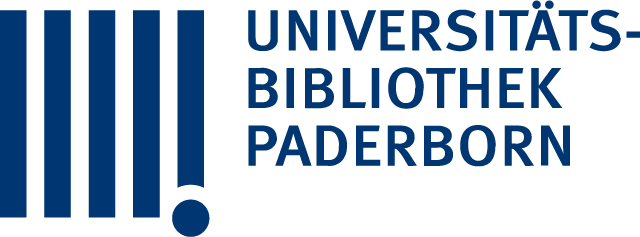Titelaufnahme
Titelaufnahme
- TitelBiopolymer nanostructures at interfaces : influence of physicochemical surface properties on IAPP adsorption, aggregation, and fibrillization / vorgelegt von Roozbeh Hajiraissi (M.Sc.) ; 1. Examiner 1: Dr. Adrian Keller, 2. Examiner 2: Professor Yixin Zhang, 3. Examiner 3: Professor Guido Grundmeier
- Autor
- Beteiligte
- Erschienen
- Umfang1 Online-Ressource (154 Seiten) : Illustrationen, Diagramme
- HochschulschriftUniversität Paderborn, Dissertation, 2018
- AnmerkungTag der Verteidigung: 12.09.2018
- Verteidigung2018-09-12
- SpracheEnglisch
- DokumenttypDissertation
- URN
- DOI
Links
- Social MediaShare
- Nachweis
- IIIF
Dateien
Klassifikation
Zusammenfassung
Die Fehlfaltung und der anschließende Zusammenbau von Proteinen und Peptiden zu unlöslichen Amyloidstrukturen spielen eine wichtige Rolle bei der Entwicklung zahlreicher Krankheiten. Die Dynamik der Selbstorganisation und die Morphologie der resultierenden Aggregate hängen entscheidend von verschiedenen Umweltfaktoren und insbesondere von der Anwesenheit von Grenzflächen ab. Hier zeigen wir im Detail, wie die Anwesenheit von Oberflächen mit unterschiedlichen physikochemischen Eigenschaften die Assemblierungsdynamik und die Adsorption von humanem Insel-Amyloid-Polypeptid (hIAPP), das an der Entwicklung von Typ-2-Diabetes mellitus (T2DM) beteiligt ist, beeinflusst. Die in dieser Arbeit verwendeten Oberflächen können in zwei Gruppen eingeteilt werden: anorganisch (Glimmer als hydrophiles Substrat und hydrophober kohlenwasserstoffbeschichteter Glimmer) und selbstorganisierte Monoschichten mit molekular definierten funktionellen Gruppen (hydrophobe, hydrophile, negative und positive Ladungs-SAMs). Die zeitversetzte Rasterkraftmikroskopie (AFM) wird eingesetzt, um die Morphologie der resultierenden Aggregate sowohl in der Massenlösung als auch an verschiedenen molekular definierten Oberflächen ex situ zu untersuchen. Die Dynamik der IAPP-Adsorption an verschiedenen SAMs wird in situ unter Verwendung einer Quarzkristallmikrowaage mit Dissipationsüberwachung (QCM-D) untersucht. Natives hIAPP (20-29) als Kernregion der Amyloidfibrillenbildung, natives hIAPP (1-37) und hIAPP (20-29) mit modifizierten Enden (acetyliert und amidiert) wurden eingesetzt, um den Einfluss der physikalisch - chemischen Oberflächeneigenschaften auf Aggregation und Selbstorganisation auf verschiedenen Oberflächen zu untersuchen. Nach Inkubation des nativen IAPP (20-29) auf der Glimmeroberfläche wurde beobachtet, dass die fibrilläre Selbstorganisation gefördert wurde und drei ...
Abstract
Misfolding and subsequent assembly of proteins and peptides into insoluble amyloid structures play important roles in the development of numerous diseases. The dynamics of self-assembly and the morphology of the resulting aggregates critically depend on various environmental factors and especially on the presence of interfaces. Here, we show in detail how the presence of surfaces with different physicochemical properties influences the assembly dynamics and adsorptions of human islet amyloid polypeptide (hIAPP) which is involved in development of type 2 diabetes mellitus (T2DM). The surfaces used in this work can be categorized into two groups: inorganic (mica as hydrophilic substrate and hydrophobic hydrocarbon-coated mica) and self-assembled monolayers with molecularly defined functional groups (hydrophobic, hydrophilic, negative, and positive charge SAMs). Time-lapse atomic force microscopy (AFM) is employed to study the morphology of the resulting aggregates in bulk solution as well as at various molecularly defined surfaces ex-situ. Dynamics of IAPP adsorption at various SAMs is studied in situ using quartz crystal microbalance with dissipation monitoring (QCM-D). Native hIAPP(20-29) as the core region of amyloid fibrillization, native hIAPP(1-37), and hIAPP(20-29) with modified termini (acetylated and amidated) were employed to analyze the influence of the physicochemical surface properties on aggregation and self-assembly at various surfaces. After incubation of the native IAPP(20-29) on mica surface it was found that fibrillar self-assembly promoted and three ...
Statistik
- Das PDF-Dokument wurde 66 mal heruntergeladen.
Lizenz-/Rechtehinweis


